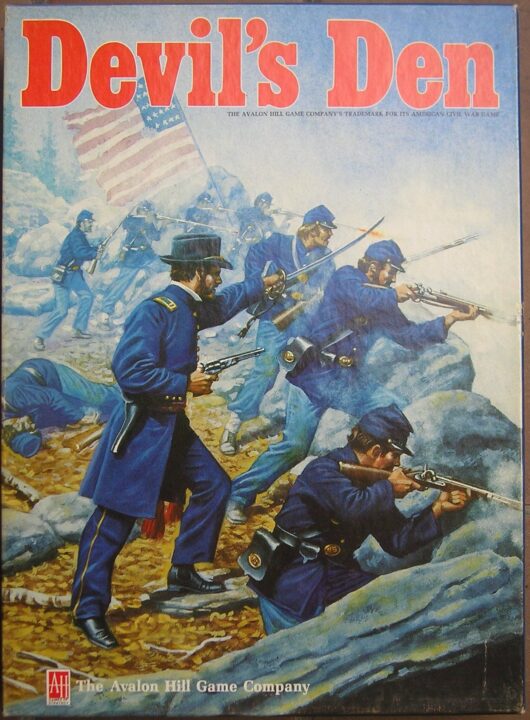If you have ever wondered what it feels like to bargain with the devil while your friends all plot your doom, then you just might be the sort of board gamer who enjoys a wild night in. Welcome to my review of Devil’s Den! I gathered my regular crew—plus a guy who still owes me for pizza—and we gave this one a go. I’ll tell you all about scheming, backstabbing, and a few surprise rules that made us question our friendship. So, crack open a bag of chips (not at my place, please) and let’s see if this game is a keeper, or if it deserves to go straight to board game purgatory.
How It Plays
Setting Up
First, plop the main board in the center. Hand out player pieces, secret objectives, and your stash of tokens. Don’t forget to put the devil marker at the starting spot—unless you like chaos from the get-go. Shuffle the event and item decks. Everyone picks a starting spot. Snacks are optional but encouraged.
Gameplay
Turns go round the table. On yours, move your piece and complete the space’s action. Sometimes you’ll grab loot, other times you’ll start a brawl, or maybe just run from the devil (again). Play cards to mess with your rivals or protect yourself. You’ll need to scheme and make deals—unless you like losing.
Winning the Game
Keep your eyes on your secret objective. Reach it, dodge the devil, survive your friends’ tricks, and get back to the entrance. First one to do this wins. If the devil catches someone, well, they’re toast. The rest keep scrambling until one is left standing—or crawling.
Want to know more? Read our extensive strategy guide for Devil’s Den.
Why Game Balance and Fairness Matter in Devil’s Den
I have a thing for balance in board games. I don’t want to sit through two hours just to find out my loss was sealed by a die roll, or because one side got extra cheese on their pizza and also extra powers in the game. Balance means everyone has a fair shot to win, no matter what character or starting spot they get.
When my friends and I played Devil’s Den, I paid close attention to this. The game sets up two teams: one plays the defenders, the other plays the attackers. It’s like tug-of-war, but with more plastic pieces and less rope burn. In our first couple of rounds, I noticed something weird. The defenders (me, always me) had a tough time. The attackers had more options, could strike from different angles, and once, my friend Pete actually laughed. Not at my jokes—at my doomed forces. Rude, Pete.
That said, Devil’s Den does try to give both sides tools to win. There are event cards that can really shake things up, and if you play your cards right (hah), you can stage a comeback. But there are swings in luck that can ruin the fun. If one team gets unlucky, they’re toast, and no amount of strategic cheese will save them.
Balance isn’t perfect in Devil’s Den, but it gets some things right. If you hate luck-based swings, be warned. Next up, I’ll tell you all about how we tried to outsmart each other—and how badly I failed at diplomacy.
Player Interaction and Strategy in Devil’s Den
When it comes to sinking your teeth into a game night, Devil’s Den brings a whole new level of plotting and scheming to the table. This is not a game where you can just sit pretty and mind your own business. You need to watch your friends like a hawk. Or in my case, like someone who suspects their pizza has been poisoned. The game’s design makes you constantly interact with other players, whether you’re making sneaky deals, breaking uneasy truces, or straight-up tricking your buddy Kevin (sorry Kev, but you left yourself wide open).
Every move feels like a little puzzle. Should you help another player this round, hoping for payback later? Or do you throw them straight into the Devil’s grasp and hope you slip through unnoticed? Many times, I found myself debating for ages while my friends groaned at my over-thinking. You can’t just go on autopilot. In Devil’s Den, your best laid plans can be flipped upside down by a clever opponent—or a traitor in your own alliance.
The game rewards those who pay attention to what others are doing, and punishes those who play with their heads in the clouds. Bluffing, misdirection, and even a bit of light-hearted sabotage are all fair game. The best part is, no two sessions have felt the same. Each group brings out new strategies—and new back-stabbing opportunities.
But just when you think you can outsmart everyone, the question looms: is it skill, or just blind luck that leads to victory? Well, hold onto your horns, because we’re about to tackle that next!
Luck vs Skill: The True Test in Devil’s Den
Let me be clear: when it comes to board games, I want my wins to feel earned. Does Devil’s Den deliver on this front? Well, yes and no. There’s a good mix of skill and a dash of luck—like dropping your last jellybean and somehow landing it in your friend’s soda. The game gives you plenty of room for plotting, planning, and a little bit of good old bluffing. You can outfox your buddies with solid moves. But, just when you think you have it in the bag, along comes a card draw that sends your plans sideways. I once played a perfect round only to watch my friend, Lucy, pull the “Shadow Leap” card. She went from last to first in one move. I almost flipped the table, but I remembered it was borrowed.
In Devil’s Den, luck can bite you, but it won’t eat you whole. The best players win more often than not. But if you want something where skill always trumps chance, this game will leave you making dramatic sighs. I enjoy how suspenseful rounds get, since no one’s crown is ever safe. My competitive friend Pete still claims the dice are loaded against him. But honestly, watching him sweat adds half the fun. If you can handle the odd lucky break, Devil’s Den will reward clever players while keeping everyone on their toes.
Next up, let’s talk about the component quality and artwork—because cardboard goblins can still look fabulous, right?
Devil’s Den: Components You Won’t Want to Toss Across the Room
Let’s get one thing straight. I’ve played games where the cards feel like they’re printed on crackers and the tokens remind me of bargain-bin buttons. Devil’s Den is not that game. Out of the box, this game surprised my whole group. The board is thick, sturdy, and could probably fend off a butter-knife (I do not recommend trying). When we opened it, I actually heard my friend Ted say, “Whoa, did we just get fancy?”
The pieces are chunky and satisfying to move around the board. Even my clumsy aunt Sheila, who usually drops every piece she touches, had zero complaints. The cards come with a nice linen finish. This not only makes them feel nice, but it also means you won’t instantly smudge them with pizza grease—unless you drop an entire slice, in which case, all bets are off.
Let’s talk artwork. Devil’s Den has some truly eye-catching art. We’re talking dark, spooky, but with a side of cartoon charm that kept us all grinning. The devil mascot is more mischievous than terrifying. The colors really jump off the board. Nothing felt recycled or lazy, which I love. You can tell someone cared about the look of this game.
The iconography made sense to us right away, and there were no “what does this symbol even mean?” moments. That’s a big deal if you hate fumbling through rulebooks every turn.
Do I recommend Devil’s Den based on components and artwork? Absolutely. I’d invite the devil himself over for game night if it meant playing another round on this set. Just don’t eat spaghetti while playing—trust me.
Conclusion
So that’s a wrap on my wild ride through Devil’s Den. If you like scheming, tricky choices, and some unpredictable fun, you’ll find a lot to like here. The game looks great on the table, feels sturdy, and encourages the kind of sneaky teamwork and betrayal that always causes my friends to threaten to unfriend me for at least five minutes. It’s not perfect—sometimes luck can throw a wrench in your perfect plans, and if you hate surprises, you might get grumpy. But most of the time, skill leads the charge, and that’s what keeps me coming back for more. Thanks for sticking around for my review—now go gather your bravest (and most backstabby) friends and see if you can survive the Den!


